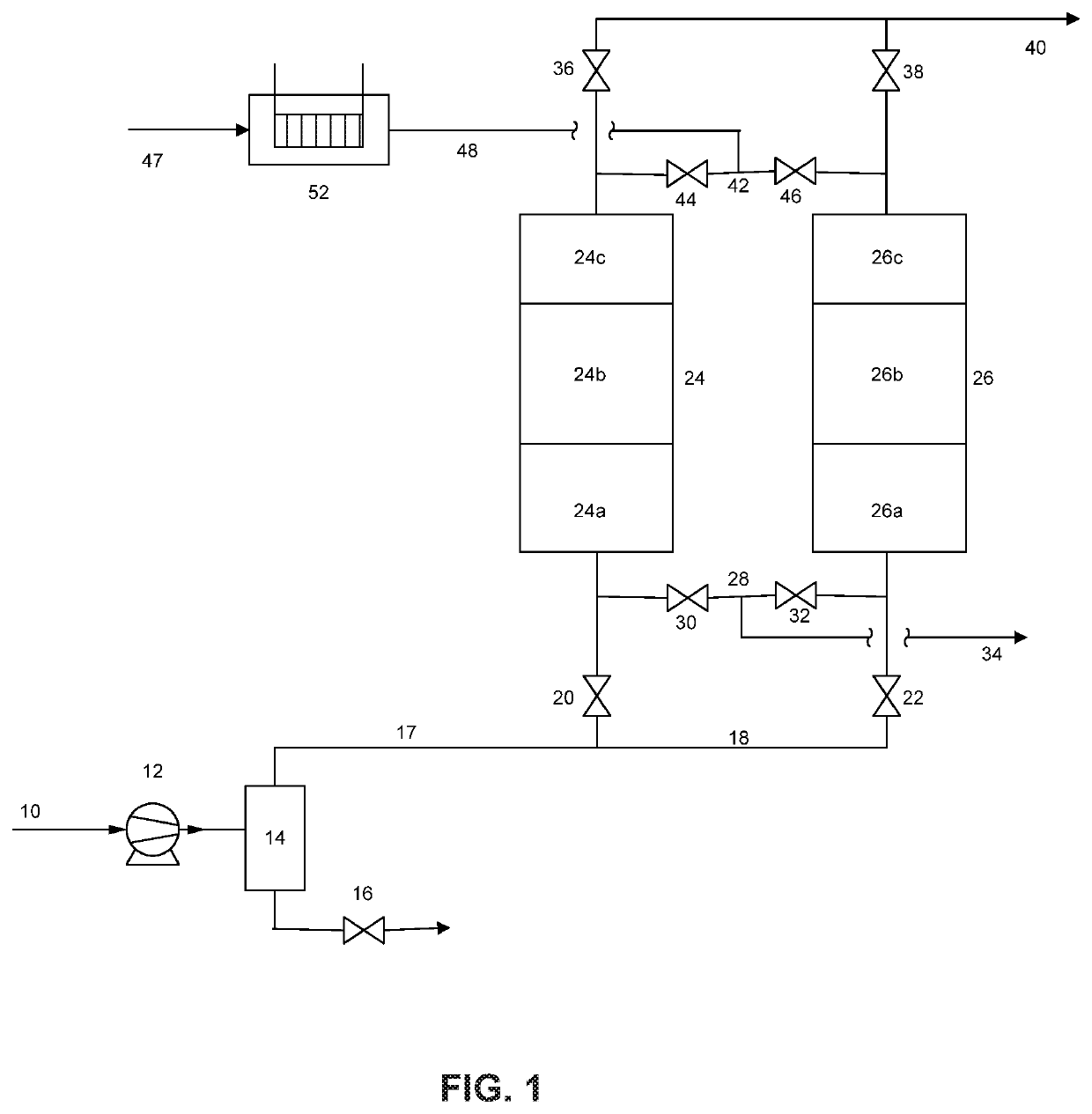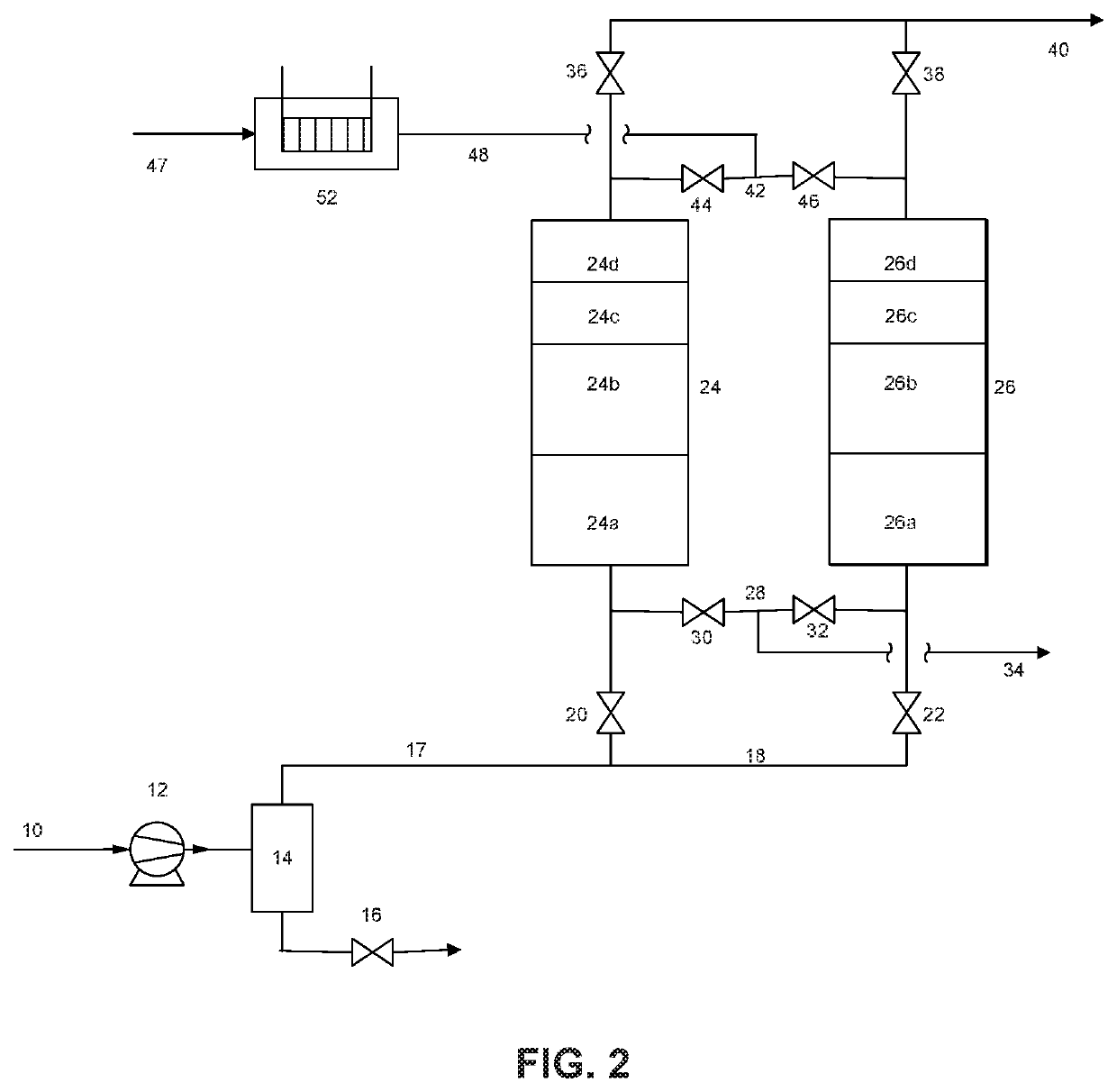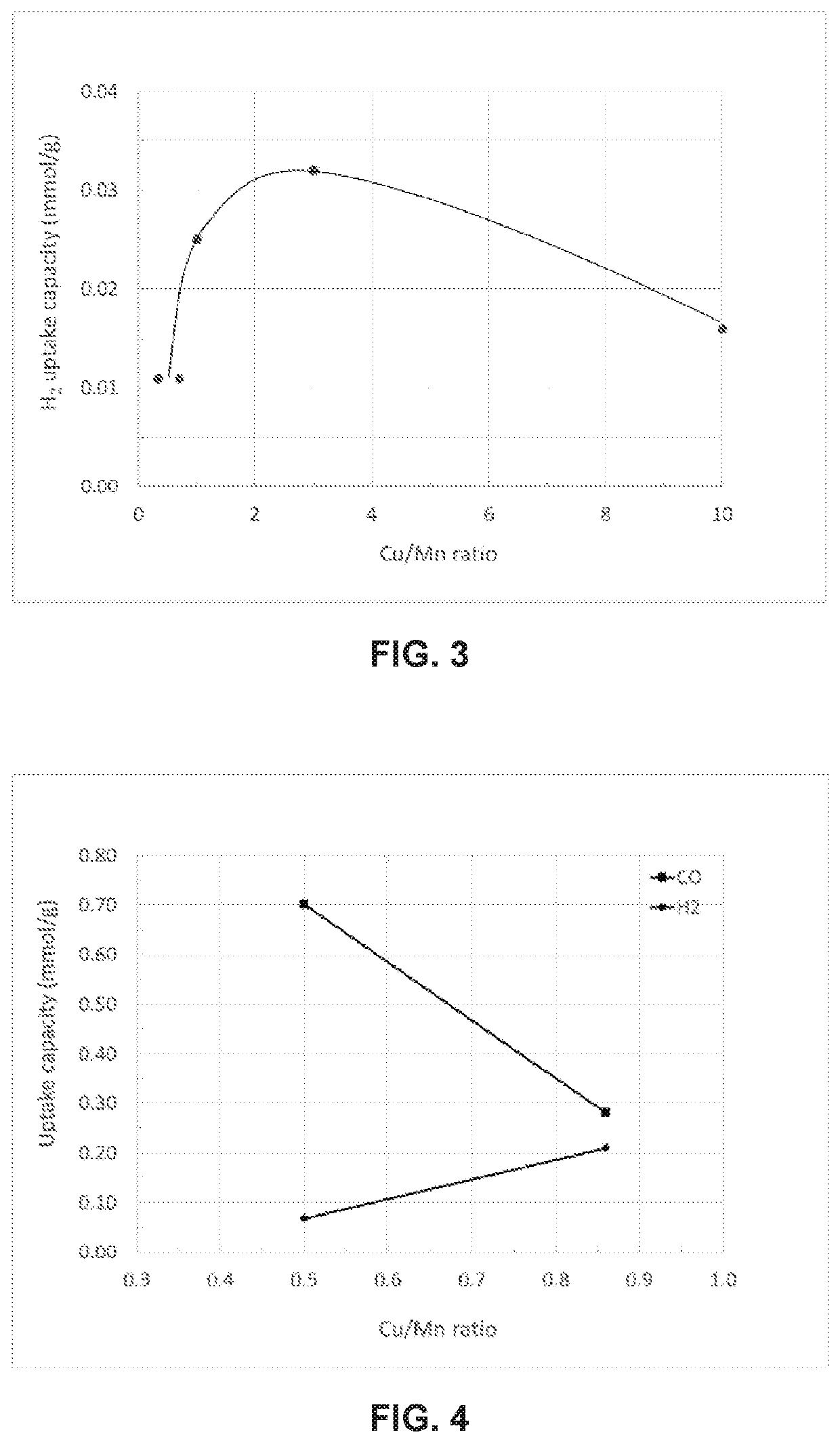Removal of hydrogen impurity from gas streams
a technology of gas stream and impurity, which is applied in the direction of manganates/permanentates, physical/chemical process catalysts, separation processes, etc., can solve the problems of increasing the failure rate of chips, water and carbon dioxide present in feed air will freeze out, and alumina or molecular sieve beds are not effective for the removal of carbon monoxide or hydrogen
- Summary
- Abstract
- Description
- Claims
- Application Information
AI Technical Summary
Benefits of technology
Problems solved by technology
Method used
Image
Examples
example 1
on of Hopcalite Catalysts with Different Cu / Mn Molar Ratios and Measurement of Hydrogen and Carbon Monoxide Uptake Capacities
[0169]Samples of hopcalite catalysts with copper to manganese molar ratios of 0.3, 0.7, 1.0, 3.0, and 10.0 were prepared by a method comparable to that of Hutchings et al (Applied Catalysis A: General 166 (1998) 143-152). Thus, solutions of copper (II) nitrate and manganese (II) nitrate solutions were mixed at target Cu / Mn ratios, precipitated by addition of an aqueous solution of sodium carbonate (Na2CO3), and washed with water to remove excess dissolved sodium. The solids were air dried at 90° C. and then calcined at 400° C. to remove carbon dioxide. The compositions made in this manner had lower surface areas than commercially supplied hopcalite, with surface areas less than 100 m2 / g. Particle sizes from each composition were determined to be similar from powder X-ray diffraction line broadening of diffraction peaks. hydrogen uptake differences were therefo...
example 2
ugh Experiments
[0177]Feed gas was passed through a reactor vessel packed with hopcalite, and the gas effluent concentration was monitored to demonstrate the performance differences of standard vs. high Cu hopcalite. The reactor vessel was fitted with sample taps along the length of the reactor.
[0178]The same commercially available standard hopcalite and high Cu hopcalite catalyst materials used in Example 1 were tested in Example 2. Typical material properties are shown in Table 1.
[0179]Before a feed step, the catalyst was regenerated by heating to 200° C. (standard hopcalite catalyst) or 70° C. (high Cu hopcalite catalyst) under a flow of air for at least 4 h, then allowed to cool to room temperature.
[0180]Dry air was pre-treated (to remove carbon dioxide and trace levels of hydrogen and carbon monoxide) and used as feed gas, and dilute mixtures in nitrogen (spike gases) of carbon monoxide, hydrogen and / or carbon dioxide were blended with the feed air to achieve the desired feed ga...
PUM
| Property | Measurement | Unit |
|---|---|---|
| temperature | aaaaa | aaaaa |
| molar ratio | aaaaa | aaaaa |
| molar ratio | aaaaa | aaaaa |
Abstract
Description
Claims
Application Information
 Login to View More
Login to View More - R&D
- Intellectual Property
- Life Sciences
- Materials
- Tech Scout
- Unparalleled Data Quality
- Higher Quality Content
- 60% Fewer Hallucinations
Browse by: Latest US Patents, China's latest patents, Technical Efficacy Thesaurus, Application Domain, Technology Topic, Popular Technical Reports.
© 2025 PatSnap. All rights reserved.Legal|Privacy policy|Modern Slavery Act Transparency Statement|Sitemap|About US| Contact US: help@patsnap.com



